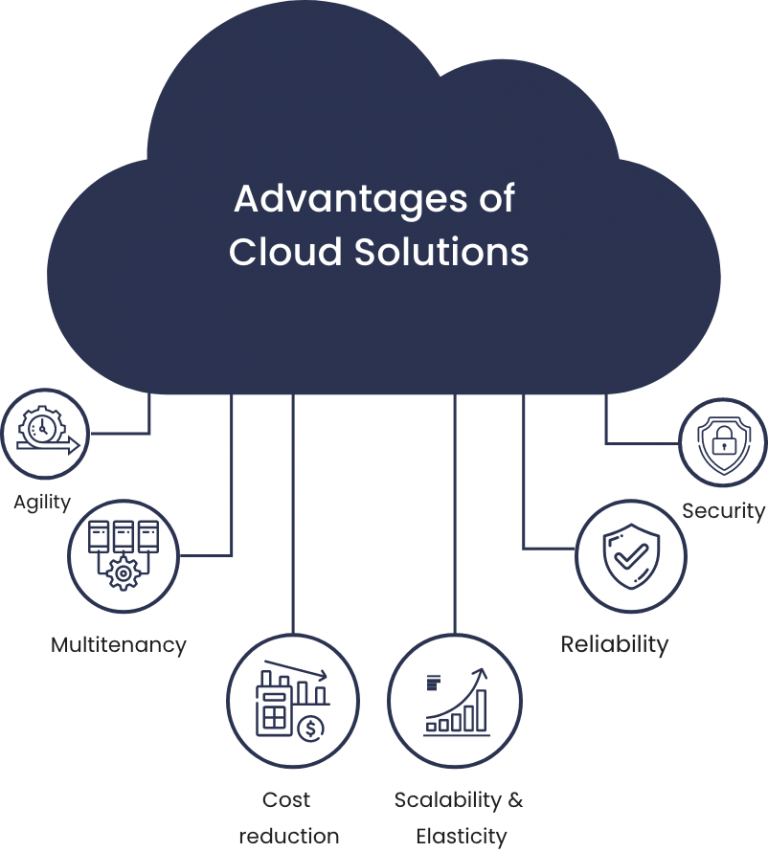
Cloud-based solutions refer to software, platforms, and services that are hosted on remote servers and accessed via the internet, rather than being installed and maintained on local servers or computers. These solutions have gained popularity in both small and large businesses due to their flexibility, scalability, and cost-effectiveness. They can encompass a wide range of tools for everything from data storage to advanced enterprise functions, all hosted on the cloud and accessible from anywhere.
- Categories of Cloud-Based Solutions :
- Cloud Computing Platforms : These platforms provide the infrastructure and tools necessary to build, deploy, and manage applications. Examples:
- Infrastructure as a Service (IaaS): Amazon Web Services (AWS), Microsoft Azure, Google Cloud Platform (GCP)
- Platform as a Service (PaaS) : Heroku, Google App Engine, Microsoft Azure App Services.
- Cloud Storage and File Sharing : These solutions offer data storage, file sharing, and backup capabilities, all hosted in the cloud for easy access. Examples :
- Business Intelligence (BI) and Analytics: These tools provide data analysis, reporting, and decision-making support. Examples include Power BI, Tableau, and Qlik.
- Google Drive, Dropbox, Microsoft OneDrive, Box.
- Cloud Software as a Service (SaaS) : SaaS products are software applications that are delivered via the cloud and accessed by users through web browsers. These solutions eliminate the need for local installations and maintenance. Examples:
- Customer Relationship Management (CRM) : Salesforce, HubSpot CRM.
- Enterprise Resource Planning (ERP) : NetSuite, SAP S/4HANA Cloud.
- Collaboration and Communication : Slack, Zoom, Microsoft Teams, Google Workspace.
- Trends in Cloud-Based Solutions :
- Edge Computing : With edge computing, data processing is done closer to where data is generated (e.g., IoT devices), reducing latency and improving performance. This trend is being integrated into cloud architectures to support real-time applications.
- Artificial Intelligence and Machine Learning Integration : Cloud providers are increasingly offering AI/ML tools and services that enable businesses to build intelligent applications and leverage advanced analytics without needing to invest in costly infrastructure.
- Serverless Computing : Serverless computing allows developers to run code without managing the underlying infrastructure, enabling faster development and reduced operational complexity.
- Cloud-Native Applications : Businesses are increasingly building applications designed specifically to run in the cloud, leveraging microservices, containers (e.g., Docker), and orchestration tools (e.g., Kubernetes) for flexibility and scalability.
Cloud-based solutions can be broken down into several categories based on the specific function they serve. These include :